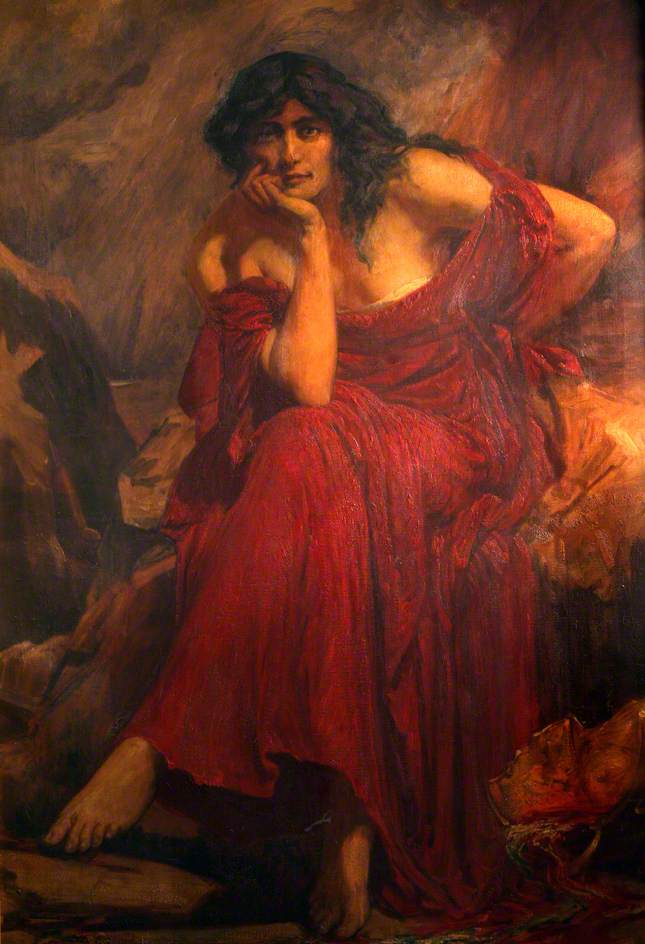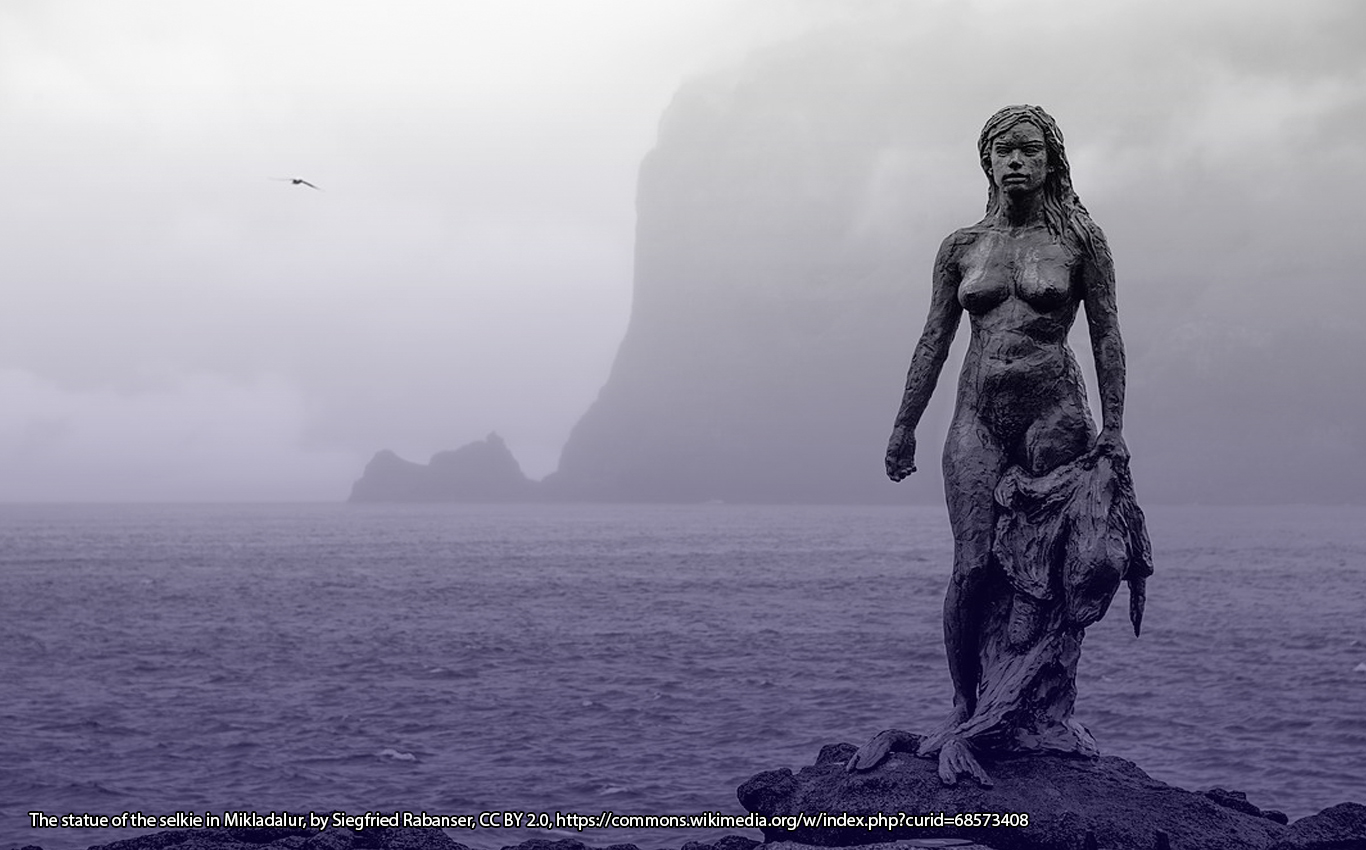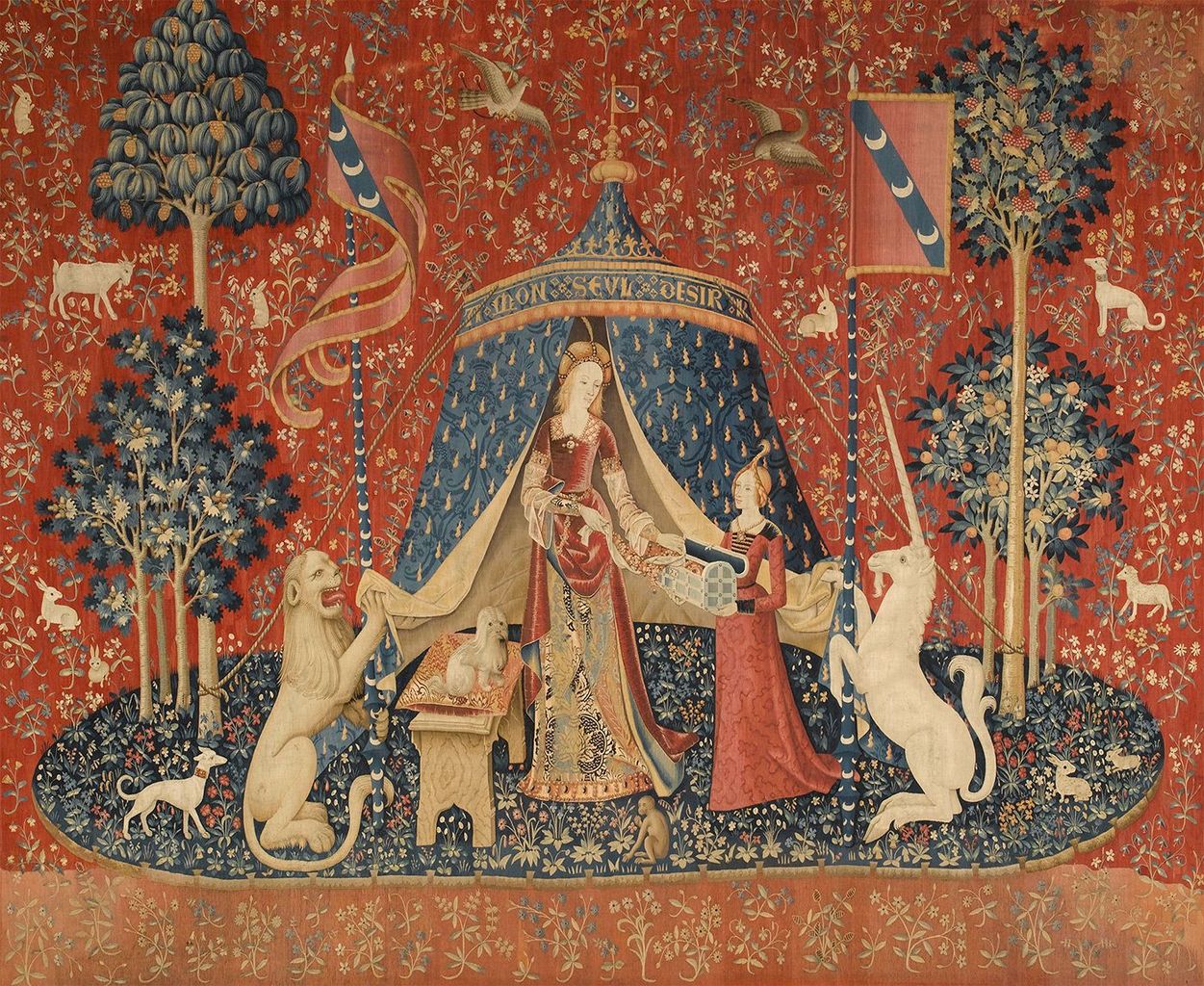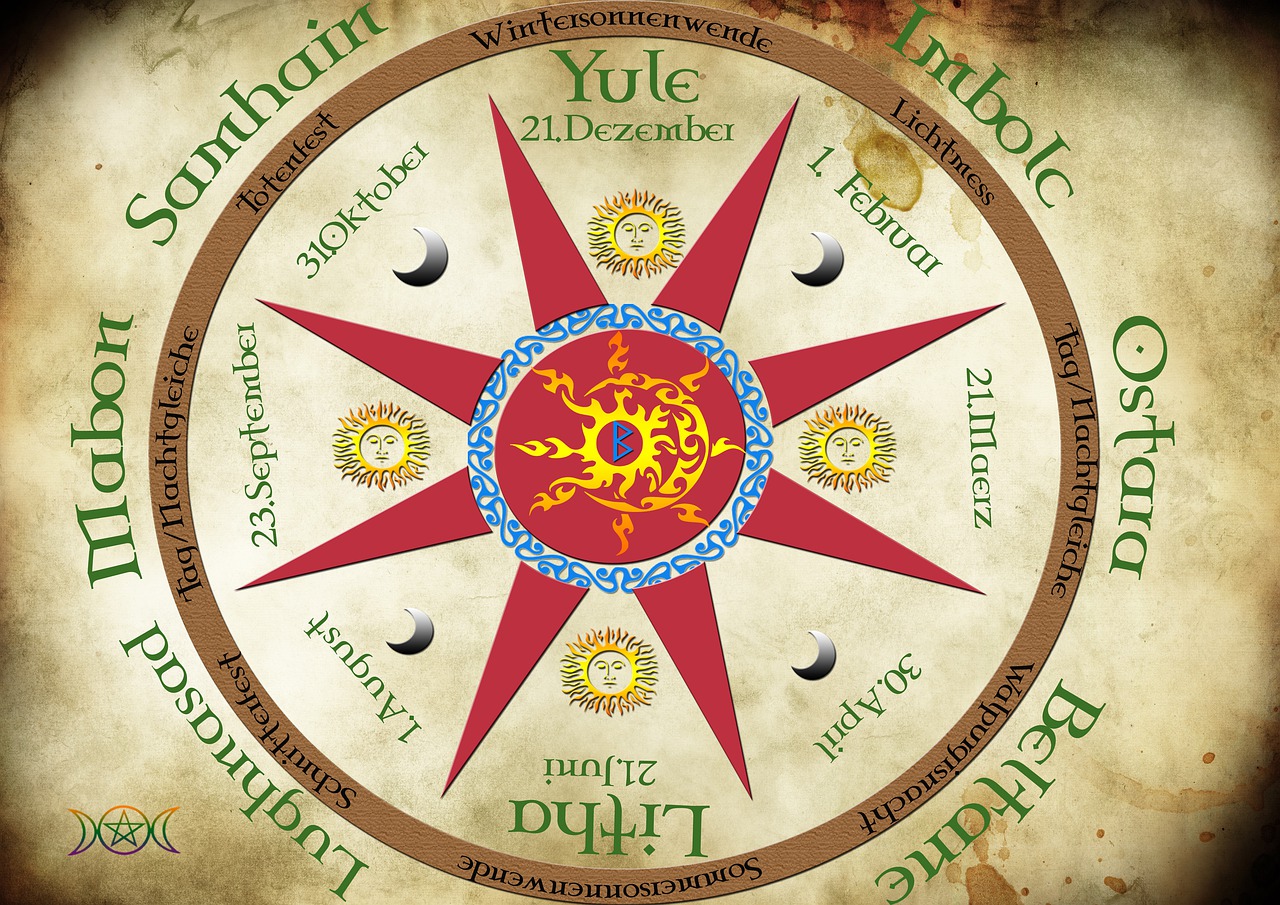Shapeshifters are found in most mythologies and folk traditions around the world from ancient to modern times. In such traditions, humans change into vampires, werewolves, frogs, insects, and just any about any other creature imaginable and back again. Sometimes the transformation is controlled by the transformer who shifts shape at will. Other times it is an unwelcome event such as a punishment and sometimes it is forced by a magical spell but there are many other reasons besides. Shapeshifters can be good or bad, often moving the story forward in a novel way or have some kind of symbolism that the teller wants to get across to their audience. There are many different kinds of shapeshifting and here we look at different examples from Ireland, Wales and Scotland that provide differing glimpses of shapeshifters in action in the myth, folklore, and tradition of these three Celtic nations.
Irish Shapeshifters
In Irish mythology, the Morrigan was a shapeshifting war goddess who could transform into a woman of any age and also change into animal or bird form. She had the power of prophecy and as a war goddess would sing her people to victory in battle. Sometimes she could be seen swooping over the battlefield in the form of a raven or crow and devouring the bodies of the slain.
In the story of the “Táin Bó Cúailnge”, or “The Cattle Raid of Cooley,” the Morrigan appears as a crow to warn the bull named Donn Cuailnge that Queen Medb is plotting to abduct him. Queen Medb attacks Ulster after the bull but is resisted single-handedly by the hero Cú Chulainn fighting a series of duels with her champions at a ford. In battle, Cú Chulainn undergoes a spectacular change in his form described as ríastrad or “warp-spasm” that sees him his body twist and contort into the most grotesque and fearsome appearance terrifying his opponents.
In between the duels, the Morrigan appears before Cú Chulainn as an attractive young woman seeking his love and offering her help. He rejects her and feeling slighted she seeks revenge by aiding his opponents. First, she turns into an eel and trips him. Next she turns into a wolf and causes a herd of cattle to stampede towards the ford. Lastly, transforming herself into a heifer she leads the stampede. Despite the magical shapeshifting she fails and Cú Chulainn manages to wound her on each transformation. Later she transforms into an old woman milking a cow bearing the three wounds. She offers him milk to drink and he blesses her healing her wounds which he later regrets.

Welsh Shapeshifters
There are many examples of shapeshifting in Welsh mythology where a human takes the form of an animal or bird and even flowers are transformed into maidens. In the story of “Math fab Mathonwy“, the Fourth Branch of the Mabinogi, the maiden Blodeuwedd was created by Math and Gwydion out of the flowers of broom, meadowsweet, and oak and was later transformed into an owl. Gwydion had earlier undergone a series of transformations changing into a stag, sow and wolf, even producing offspring as a punishment inflicted by Math.
Arguably, one of the most exciting and extraordinary examples of shapeshifting appears in the story of the birth of Taliesin. The sorceress, Ceridiwen, brewed a potion to give to her son, Morvran ab Tegid, that would endow him with great wisdom and knowledge. She gave a boy named Gwion Bach the task of stirring the brew and tasked a blind man with feeding the fire. As Gwion was stirring three boiling hot drops spat from the cauldron on to his hand. Putting his hand to his mouth to relieve the pain he accidentally ingested the drops. This endowed him, instead of Morvran, with knowledge and wisdom and he foresaw Ceridwen’s wrath at the accidental ruining of her scheme.
Knowing he must escape, he transformed into a hare but she transformed into a greyhound hot on his tail. Therefore, he transformed into a fish and leaped into a river but she transformed into an otter and closed in on him. In the nick of time, he transformed into a bird and flew away. She transformed into a hawk and again began to close in on him. Seeing a pile of winnowed wheat in a barn he dived into that transforming into a single grain of corn. Transforming herself into a black hen she pecked it all up including him. With him inside her, she was now pregnant and nine months later gave birth to a beautiful baby boy. Realising the baby was Gwion Bach reborn she wanted to kill him but because of the fairness of his brow could not. Giving him a slim chance of survival, she placed him in a leather bag and cast him into water. He would later be rescued and became the greatest Welsh bard of all time.

Scottish Shapeshifters
In Scottish folklore selkies and kelpies are two very different kinds of shapeshifting entities from examples from the examples from Irish and Welsh mythology we have looked at. They are completely different from each other having very different characteristics but both featuring in interesting legends and traditions. First, we will take a look at the selkie followed by a look at the kelpie.
A selkie changes its form from seal to human by removing its seal skin. To revert to its seal form it must put its seal skin back on. Often it is the female selkie who becomes trapped in a relationship when a man steals her seal-skin while she is in human form. With the theft of her seal-skin, her power has been stolen and she is unable to transform back into her original form and must live on land as a woman. Sometimes she will marry but spend much of her time pining for the sea. She may have children but if she ever recovers her seal-skin she quickly forsakes them and her husband to return to the sea. According to tradition, male selkies are very handsome in human form and women find them very seductive. The male selkie tends to seek out those women who are unhappy in their marriage such as fishermen’s wives who wait patiently at home alone for their husband’s return.
Kelpies are a different kind of entity in Scottish folklore. They are dangerous, supernatural horses-like entities with shapeshifting abilities dwelling in rivers, pools and lochs. According to tradition lone travellers sometimes encountered them lingering near watery places. They often take the form of a beautiful woman or horse but can also adopt other guises such as that of an old man. One sign of their true identity can be revealed when water weed is noticed entangled in their hair.
A folktale from the island of Barra tells how an amorous male kelpie transformed into a handsome young man hoping to seduce and marry a local girl. While the young man was sleeping she noticed he wore a silver necklace which was really his bridle. She removed it and he transformed into a horse. The girl took the horse to her father, who was a farmer, and he put it to work for a year. When the year was up she took it to a wise man, seeking his advice. He advised her she must give the silver necklace back, which she did, and the horse transformed back into the handsome young man. The wise man asked the younger man if – given the choice – he would prefer to live as a kelpie or a mortal man. The young man asked the girl if she would be prepared to marry him if he kept his human form. She confirmed that she would, and the kelpie chose to be a mortal man and married the girl.
Shapeshifters in Abundance
From gods and goddesses to witches and sorcerers, to strange dangerous supernatural entities that haunt the wilds, Celtic mythology and folklore have an abundance of shapeshifters. The idea of the transformation of a human to animal or other form predates the Celts and examples are found in the rock art of ancient people all around the world. Similarly in the modern age shapeshifters are found in all of the traditional and modern media which reflects on its continuing popularity and the fact that it still strikes the right chords for many people just as it did for people in antiquity.
More articles in the ‘Living World of the Ancient Celts‘ series:
- Animism and the Living World of the Ancient Celts
- Celtic Warrior Women: Queen Boudica of the Iceni
- Sacred Celtic Trees
- Magical Celtic Cauldrons
- Shapeshifters in Celtic Mythology
- Celtic Otherworlds
To read all the articles in this series, visit the ‘British Legends Series’ page or select from the list below:
- British Legends: The Quest for the Holy Grail
- British Legends: The Founding of Britain: Brutus of Troy and the Prophecy of Diana
- British Legends: The Mabinogion – The Dream of Macsen Wledig
- British Legends: Gogmagog and the Giants of Albion
- British Legends: Treachery, Murder, Lust and Rowena: The Rule of Vortigern
- British Legends: The Origin of Albion and the Bloodlust of Albina and Her Sisters
- British Legends: The Lust of Uther Pendragon, Merlin’s Prophecy and the Making of a King
- British Legends: Aurelius Ambrosius, Legendary King of the Britons
- British Legends: Elen of the Hosts – Saint, Warrior Queen, Goddess of Sovereignty
- British Legends: Beowulf and the Great Flame Dragon
- British Legends: The Divine Tragedy of Guinevere
- British Legends: The Tragic Romance of Tristan and Isolde
- British Legends: Morgan le Fay – Magical Healer or Renegade Witch?
- British Legends: The Madness of Merlin (Part 1)
- British Legends: The Madness of Merlin (Part 2)
- British Legends: Warrior Women — The Battle of Britomart and Radigund the Amazon Queen
- Mythical Beasts: The Griffin, the Legendary King of All Creatures
- British Legends: King Lear and Cordelia – A Tale of Love and Foolishness
- British Legends: Wild Edric, the Wild Hunt and the Bride from the Otherworld
- British Legends: The Outlaws of Inglewood and the Feminine Influence






![Boadicea, leader of the rebellion against the Romans. By Joseph Martin Kronheim (1810–96)[1] - This file has been extracted from another file: Pictures of English History - Plates I to IV.jpg, Public Domain, https://commons.wikimedia.org/w/index.php?curid=12705208](https://folklorethursday.com/wp-content/uploads/2020/10/Pictures_of_English_History_Plate_IV_-_Boadicea_and_Her_Army.jpg)





